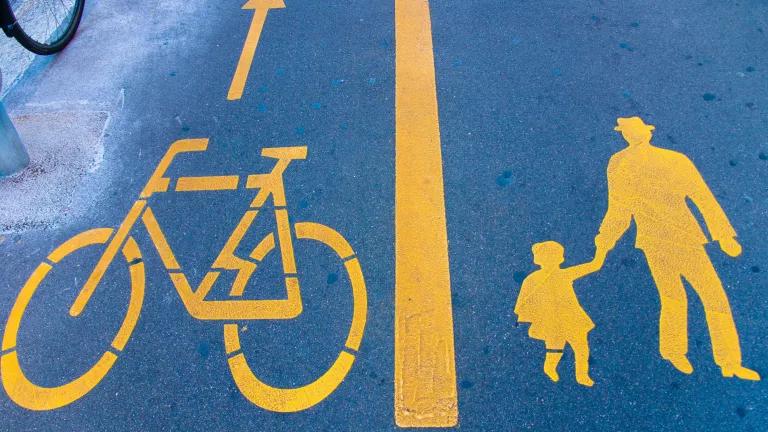The National Journal just published the following question on its website and asked experts to weigh. I was happy to oblige -- read my response further below.
"Trying to market a city without transit is like trying to sell a cell phone without a camera." That was one of the take-home messages from a speaker at an urban planning conference earlier this year, according to my friend who was there. The room was full of city planners who are trying to convince businesses to settle in their areas. Transit is considered key not just because it gives people an easy way to get to work, but it also signals to the private sector that a city is healthy enough to invest in itself.
This week, the American Public Transportation Association released its third quarter ridership report, showing seven consecutive quarters of ridership growth on subways, buses, and commuter rail. There have been 7.9 billion rides from January through September of this year. If the trend continues, it will amount to 10 billion rides by the end of the year. "That's real numbers. These are impactful numbers," said APTA President Michael Melaniphy. "It's not just an urban phenomenon. Cities under 100,000 people are seeing good growth. Demand is pushing the capacity of what they can handle." Almost 60 percent of transit rides are work commutes, according to APTA, and cities are looking for ways to give workers on swing shifts access to their jobs.
Melaniphy believes the public and local leaders are way ahead of Congress in terms of willingness to finance transit. APTA spent much of the last year simply trying to protect existing federal funds from being cut in a two-year highway bill. Around the country, the attitude was different. In 2012, local initiatives to tax more for transit had a 79 percent passage rate. Last year, the rate was 76 percent. "The mayors get it," Melaniphy said. The state of cities' transit systems are among the top five questions asked of city officials by businesses looking to locate there.
What is transit's role in the economy? How important is it to job growth? We know transit is essential in densely populated areas, but how can it be useful in less densely populated areas? Should transit systems prioritize work commutes over other kinds of travel? How should cities and towns develop and market their transit systems? What is the future for transit?
My response:
America Needs – and Wants – More Transit
America's love affair with the automobile seems to be entering a new phase. At this stage of the romance, our passion for cars has cooled into more of a marriage of convenience for a lot of us. Sure, we still like our cars well enough but with the hassle of traffic and the cost of gas, many of us (especially the Boomers and Millennials) just aren't that into driving as much these days. America seems to have a new love, and it turns out to be an old flame: transit.
That's right, good old public transportation is making a comeback. Ridership on buses and trains is soaring, with combined bus and rail surpassing levels not seen since the 1950s -- before America's car craze. And why not? Transit offers us so much: it boosts economic development, eases congestion, saves oil, reduces pollution, promotes public health, and it creates jobs.
Not only does America need more transit, Americans want more of it. In fact, three out of four Americans are frustrated with the lack of transportation options that forces them to drive more than they would prefer, according to a recent nationwide public opinion survey commissioned by my organization, the Natural Resources Defense Council. According to NRDC’s poll results, two out of three support government investment in to expand and improve public transportation and twice as many people favor new transit – buses, trains and light rail – over new highways as the best way to solve America’s traffic woes.
Some other pro-transit poll findings:
- 59% feel the transportation system is “outdated, unreliable and inefficient”
- 55% prefer to drive less, but 74% say they have no choice
- 58% would like to use public transportation more often, but it is not convenient or available from their home or work
- 59% would like more transportation options so they have the freedom to travel other than by driving
- 63% would rather address traffic by improving public transportation (42%) or developing communities where people do not have to drive as much (21%) – as opposed to building new roads, an approach preferred by only one in five Americans (20%)
- 64% say their community would benefit from an expanded and improved public transportation system, such as rail and buses
- 67% favor setting new standards for local planning that guide new development into existing cities and or near public transportation
Given these poll results, now is the time to invest in expanding and improving public transportation. Fortunately, more and more cities are getting on board with transit as a way to deliver more transportation choices to drivers – and also to boost their economies. Charlotte, North Carolina, has a popular light rail line and plans to extend the system to better serve city residents and suburban commuters. Just recently it was announced by local officials that new federal funds will cover half the construction costs for a $1.16 billion light-rail extension that will connect downtown to UNC Charlotte, with 11 stations over the 9-mile route. A columnist at the Charlotte Observer praised the project, wisely noting that the so-called Lynx Line should be viewed not as a cost, but as an investment.
Over the weekend, an editorial in the Minneapolis Star Tribune endorsed an ambitious multi-year, multi-modal plan to boost light rail and bus rapid transit in the Twin Cities by investing $4.4 billion for an estimated return of up to $10 billion. The plan promises a host of positive impacts, including vehicle operating cost savings, travel time savings, shipper and logistics cost savings, emission reductions, safety benefits, and pavement maintenance savings. Moreover, more than 30,000 full-time jobs would be created during the construction period alone. "This transit investment must be accompanied by increased funding for highways and roads." the editorial acknowledges, "[b]ut because they are already clogged, increased transit must be part of the solution, which benefits not just transit riders but individual drivers, too. It also helps employers, who need efficient and dependable methods for their workers."
Meanwhile, in the Golden State big metropolitan regions in the north (Sacramento) and south (Los Angeles and neighbors) are adopting new long-range transportation plans with bold investments in public transportation such as Mayor Villaraigosa's 30-10 plan.
Federal transportation policy has to be better balanced by putting more money toward transit. That's the direction the Obama administrations has started to go through initiatives such as TIGER, its successful HUD Sustainable Communities initiative and the New Starts program. Congress should follow suit, and there are worse places to start than restoring parity between modes for commuters by bringing transit pre-tax benefits ($125) back up to the level of parking ($240).



